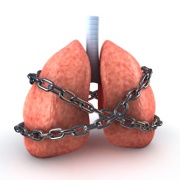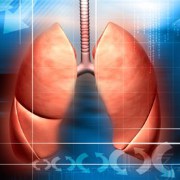What is Tuberculosis
Tuberculosis or TB is an infectious, communicable disease that usually affects the lungs, but can also affect any other part of the body. Robert Koch, a German physician discovered the tuberculosis bacteria (mycobacterium tuberculosis) in 1882. This discovery won him the Nobel prize. In the past, people referred to this disease as "consumption" because those with untreated tuberculosis experienced extreme weight loss.
Tuberculosis is spread when people who have the active disease cough, sneeze, or spit. Once the bacteria is airborne, it is inhaled by those around and it settles in the lungs. From there, it can spread throughout the body.
Many of the tuberculosis infections are "latent" - that is, the patient experiences no symptoms. Approximately one-tenth of those with latent tuberculosis will go on to develop full-blown tuberculosis, which will kill about half of those who do not receive medical attention.
According to the Communicable Disease Management Protocol of the Province of Manitoba, Canada, "more than 90% of cases are symptomatic at the time of primary infection and can be identified...through...the tuberculin skin test...." Many of the patients examined had clear chest X-rays, although fibrotic lesions were visible in some.
"In the past, primary infection occurred almost entirely in childhood, but as the incidence of tuberculosis has declined, primary tuberculosis [that is, first time infections] is also being seen in adults." (www.gov.mb.ca)
It is estimated that over 8 million new cases of tuberculosis happen each year worldwide and about 2 million of those die. In the last 10 years, TB cases have increased by about 20% in Africa, Asia and Latin America. If these trends continue, 36 million deaths will have occurred from TB by the year 2020 - 10 years from now.
About 10-15 million Americans are currently infected with the TB bacteria with 22,000 new cases occurring each year. Tuberculosis is rare in Canada, with approximately 70% of Canadian TB cases originating from exposure outside the country. It is interesting to note, however, that the vast majority of Canadian-based diagnosed cases are among the aboriginal or First Nations populations in the Northwest Territories. Worldwide, consistent statistics show that it is the poorest of the population that often contracts the disease.
Types of Tuberculosis & Symptoms
There are several known types of tuberculosis, including, but not limited to...
Pulmonary tuberculosis - As we have learned through other articles, the term "pulmonary" refers to the lungs. Symptoms include night sweats, low-grade fever, and cough which produces blood streaked phlegm. These symptoms start out small and then progress over the ensuing weeks or months.
Miliary tuberculosis - "Miliary" means that the bacteria has been disseminated to other parts of the body through the bloodstream during the early stages of primary infection. This happens before the body's immune system has a chance to respond to the primary infection. The symptoms for this form of tuberculosis are the same as for pulmonary tuberculosis, which can lead to misdiagnosis or delayed diagnosis. Without effective diagnosis and treatment, this condition is fatal.
Tuberculous meningitis - This is an extremely rare but most rapidly progressive form of tuberculosis with approximately 50% of cases being ill for less than two weeks prior to diagnosis. Symptoms include: headache, fever, meningeal irritation (membranes covering the brain and spinal cord), cranial nerve palsies, seizures, coma, abnormal cerebrospinal fluid pressure and death.
Extra-pulmonary tuberculosis - Tuberculosis lymphadenitis (inflammation of the lymphatic gland) is the most common form of extra-pulmonary tuberculosis. Cervical nodes (those nodes at the back part of the neck), are usually affected the most, but genitals, urinary tract, bones, and joints may also be affected. Unlike the other forms of tuberculosis, patients usually do not have a fever, but show slowly enlarging, painless mass lesions. These lesions can drain through the skin or into those tissues surrounding the lesions.
In the past, children were often exposed to the tuberculosis bacteria through unpasteurized milk. The pasteurization process kills the tuberculosis bacteria and so is no longer an issue for many countries.
Diagnosis
Diagnosis for all forms of tuberculosis depends on chest X-rays, a tuberculin skin test (which determines whether a person has been exposed to TB), blood tests, and microscopic examination and bacterial testing of bodily fluids.
Treatment
The body's natural immune system can fight off the infection or at least prevent the disease from spreading. It does this by forming scar tissue around the tuberculosis bacteria and isolating it from the rest of the body and keeping it contained in an inactive state. When this happens, the person will not develop symptoms and cannot pass it along to other people, although as time passes and these scars calcify or harden, they may appear on X-rays and, as the presence of calcium cannot be determined through an X-ray, may be mistaken for cancer.
If a person's immune system is weakened or compromised, however, the TB bacteria can break through the scar tissue and cause "reactivation tuberculosis" or "secondary TB." Age, development of other infections, cancer, or the taking of certain medications (eg: cortisone, anticancer drugs, or certain arthritis or inflammatory bowel disease medications) can lead to a compromised immune system.
Treatment of active TB requires antibiotics, but for an extensive period of time, usually for six months or longer. Many patients if left to continue antibiotic therapy themselves will discontinue their treatment. It is common practice for doctors to prescribe the treatment be administered by a healthcare worker. Treatment done this way is shorter and given only two or three times a week.
Taking your medications as prescribed for as long as prescribed is important to helping prevent the development of drug-resistant strains.
A TB vaccine is usually given to babies in areas where the TB infection rate is high. There is currently no vaccine that will provide reliable protection for adults, although one such vaccine, sponsored by the National Institute of Allergy and Infectious Diseases (NIAID), entered clinical trials in the United States in 2004. A group led by Oxford University is currently studying the results of the second phase of trials of a vaccine in South Africa. The Bill and Melinda Gates Foundation has recently provided $200 million to the Aeras Global TB Vaccine Foundation for clinical trials planned for up to six TB vaccines under development.
Sources: www.medicinenet.com; www.lung.ca (Canadian Lung Association); www.gov.mb.ca (Government of the Province of Manitoba, Canada); www.csmc.edu (Cedars-Sinai); www.phac-aspc.gc.ca (Public Health Agency of Canada with statistics from Statistics Canada or StatsCan); www.dictionary.com; www.wikipedia.com





Add a Comment2 Comments
Hello everyone here in this forum i am so glad that i have this great opportunity to come out here and share my testimony on how Dr idahosa was able to cure me totally from Hiv disease, i have been suffering from this Disease for approximately 4 Years now, i have tried various ways to get rid of this Virus out of my body, i have also purchase for Medical treatment from my doctor but they all failed, sometime back now while i was browsing the Internet i found some good quote concerning Dr idahosa Herbal Medicine, and how he has been using it to save souls from Different Disease including Cancer, someone also said she was been cured of Hiv from his medicine, and they gave out his contact details in case anyone needs his help, i decided to contact Dr idahosa and i told him about my Hiv illness he told me not to worry that he was going to send me his herbal medicine all i was to do is to send him my personal details and also my home address so he can post the Medicine to me, actually i did all that was required by this Man, i took the medicine just as prescribe by him, he told me to go for check up in the hospital which i did and to my great surprise my Doctor told me the Hiv Virus was no longer there, i even went to other hospital for better confirmation its was still the same thing, Today i am so happy that i am Negative again, Dr idahosa has given me reasons to share tears of Joy, you can reach to Dr idahosa on his email address at ( [email protected]) or call him on +2348134261542
November 28, 2015 - 5:52amThis Comment
My MRI shows an abscess in the paracentral region and endocrine soft tissue component pressing thecal sac and a nerve root. There is no slipped disc or any other physical deformity of the spine
April 16, 2010 - 7:22pmThis Comment